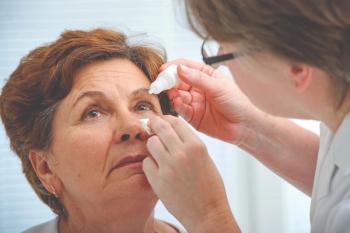
Process key to pain management
An optometrist's understanding of ocular pain management must always be evolving as you become more immersed in primary care, but, according to recent literature, most doctors under evaluate a patient's pain and discomfort and often don't prescribe enough medication.
Bruce E. Onofrey, OD, RPh, FAAO, clinical professor at the University Eye Institute of the University of Houston, provided an update on pain management, focusing on how optometrists can better understand and treat their patients' pain, and reviewed analgesics for ocular pain at the 3rd annual American Optometric Society meeting here in February.
"You should always be aware of the patient's pain," Dr. Onofrey said.
Acetaminophen
The mechanism of acetaminophen is not fully understood, but Dr. Onofrey noted it does lower fever without producing an anti-inflammatory effect or inhibiting platelets. It's often the drug of choice for children, pregnant women, and nursing mothers.
However, acetaminophen has also been associated with liver failure, he said. Those at greatest risk are children and adults who drink alcohol more than three times a day.
Opiates
Endogenous endorphins stimulate the morphine opioid receptors in the brain and spinal column. Opiates bind to these receptors and block the central pain receptors to produce an analgesic or sedative effect, Dr. Onofrey said. Schedule II opiates have high risk of abuse, while schedule V drugs have the lowest risk of abuse.
Common side effects of opiates include itching, nausea, urinary tract problems, drowsiness, and decreased respiration, according to Dr. Onofrey. "These are normal physiological responses," he said, and not the signs of an allergic reaction. Because opiates can decrease the respiratory rate, never prescribe them in a patient with chronic occlusive pulmonary disease or sleep apnea, he said.
Newsletter
Want more insights like this? Subscribe to Optometry Times and get clinical pearls and practice tips delivered straight to your inbox.




















































.png)


